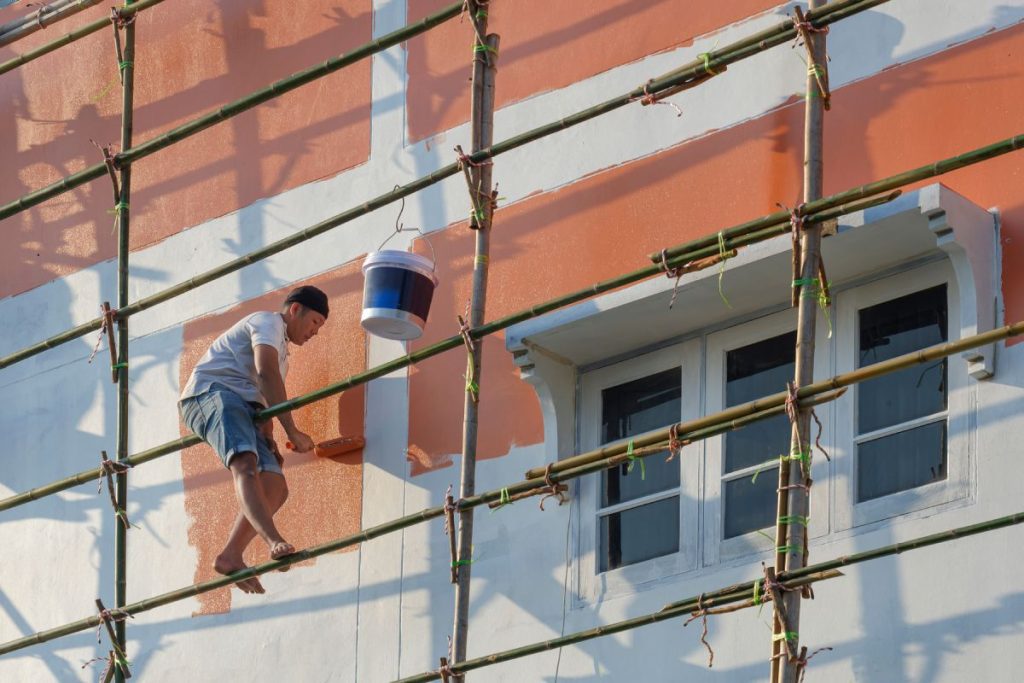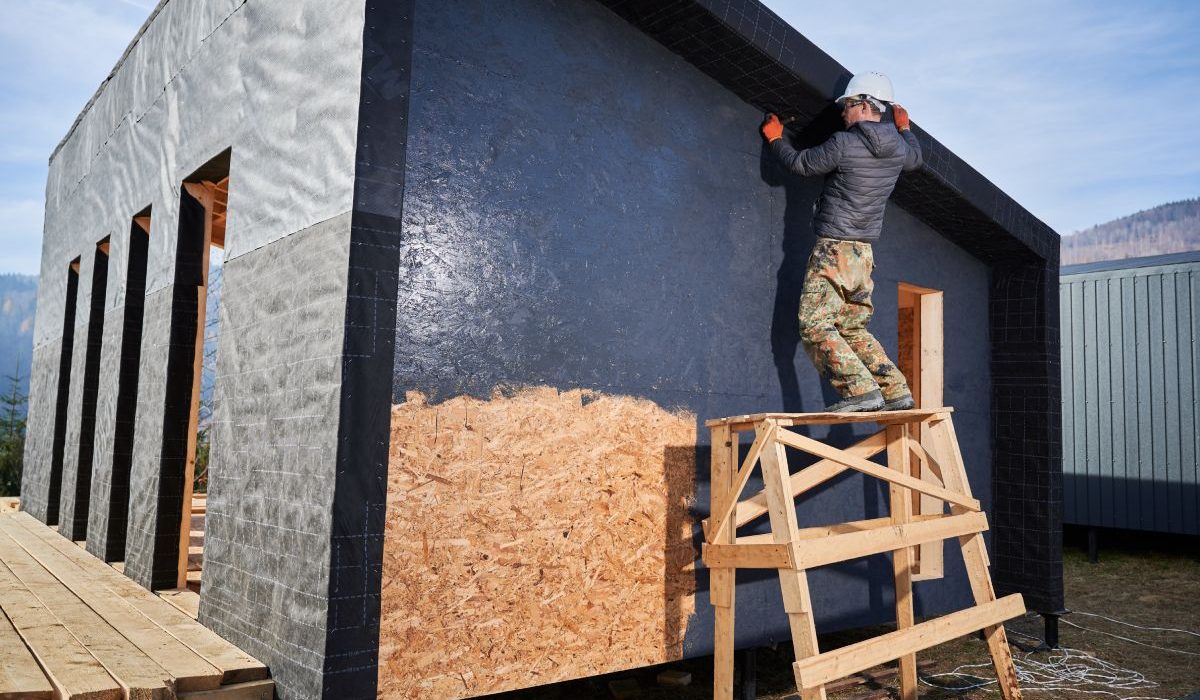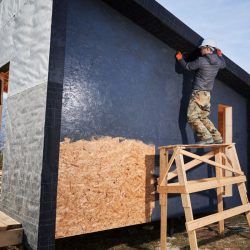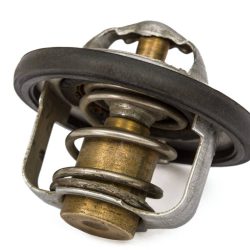Heat-resistant paint, often referred to as high-temperature paint, is a specialized type of coating designed to withstand elevated temperatures without degrading or losing its protective properties.
This remarkable paint has found a wide range of applications in industries, homes, and even artistic endeavours, providing both aesthetics and functionality.
In this article, we will make the clarification about what exactly is heat-resistance paint and does it reduces heat in the house. Get ready and follow us for more.
What Exactly is Heat Resistance Paint?
Heat-resistant paint is formulated with unique chemical compositions that enable it to endure extreme temperatures without blistering, peeling, or fading. These paints are typically made by combining special pigments, binders, and additives that can withstand high heat levels.
The primary purpose of heat-resistant paint is to provide a protective layer on surfaces exposed to high temperatures, preventing damage or corrosion caused by heat.
Composition of Heat-Resistant Paint
- Pigments: Heat-resistant pigments are a crucial component of these paints. These pigments are often made from materials like silicone, epoxy, or ceramic, which can endure high temperatures. They are responsible for the paint’s ability to reflect heat and resist thermal degradation.
- Binders: Binders in heat-resistant paint are chosen for their ability to withstand extreme temperatures. Common binder materials include silicone resins and epoxy. These binders help the paint adhere to surfaces effectively, even in high-heat environments.
- Additives: Various additives may be included in heat-resistant paint formulations to enhance specific properties. These additives can improve adhesion, increase resistance to chemicals, or provide additional protection against UV radiation, which is essential in outdoor applications.

Applications of Heat-Resistant Paint
- Industrial Equipment: Heat-resistant paint is widely used in industrial settings. It is applied to equipment like boilers, furnaces, pipes, and exhaust systems to protect them from the corrosive effects of high temperatures. This extends the lifespan of the equipment and reduces maintenance costs.
- Automotive: In the automotive industry, heat-resistant paint is used on exhaust systems, engine components, and brake callipers. This not only enhances the visual appeal of these parts but also protects them from heat-related wear and tear.
- Cooking Appliances: Oven interiors, stovetops, and grills often feature heat-resistant paint to ensure they can withstand the high temperatures generated during cooking. This paint also helps maintain a clean and attractive appearance.
- Artistic Endeavors: Some artists and craftsmen use heat-resistant paint to create stunning artwork on metal, glass, or ceramics. The ability of this paint to withstand the high heat of kilns or ovens is particularly valuable in such applications.
- Fireplaces and Wood Stoves: Heat-resistant paint is used to coat the interiors of fireplaces and wood-burning stoves, preventing them from deteriorating due to exposure to intense heat.
Benefits of Heat-Resistant Paint
- Protection: The primary benefit of heat-resistant paint is its ability to shield surfaces from heat-related damage, including corrosion, blistering, and discolouration.
- Extended Lifespan: By applying heat-resistant paint to equipment and surfaces exposed to high temperatures, their lifespan can be significantly extended, reducing the need for frequent replacements.
- Aesthetic Improvement: Heat-resistant paint can enhance the appearance of objects and surfaces while providing protection. This makes it a popular choice for both industrial and artistic applications.
- Safety: In environments where high temperatures are present, using heat-resistant paint ensures safety by preventing structural damage that could lead to accidents or malfunction.
Heat-resistant paint is a remarkable innovation that has revolutionized various industries and provided countless benefits in homes and artistic endeavours. Its ability to endure extreme temperatures while simultaneously enhancing aesthetics and protecting surfaces makes it an invaluable tool in numerous applications.

Does Heat-Resistant Paint Reduce Heat?
While the name “heat-resistant paint” might suggest that it reduces heat, its primary purpose is not to lower temperatures but rather to endure and protect surfaces from high temperatures. Heat-resistant paint is designed to withstand heat without breaking down, but it doesn’t possess properties that actively reduce heat.
To understand this better, let’s explore the concept of heat resistance and how heat-resistant paint functions.
Heat Resistance vs. Heat Reduction
- Heat Resistance: Heat-resistant paint is engineered to maintain its structural integrity and protective properties at elevated temperatures. When exposed to heat, it doesn’t break down, release harmful fumes, or ignite. This resistance to heat is crucial for applications where maintaining the integrity of the coated surface is paramount, such as in industrial settings, automotive components, and cooking appliances.
- Heat Reduction: Reducing heat involves actively dissipating or reflecting it away from a surface. Materials designed for heat reduction, like reflective coatings or insulating materials, are used in applications where heat management is critical, such as insulating homes or protecting electronic devices from overheating.
How Heat-Resistant Paint Works
Heat-resistant paint functions by forming a protective barrier on the surface it’s applied to. When exposed to high temperatures, it doesn’t absorb heat to a significant extent but rather reflects some of it. The paint’s composition, including specialized pigments and binders, helps in this process.
The extent to which heat-resistant paint can reflect heat depends on factors like the composition of the paint, the thickness of the coating, and the intensity and duration of the heat source. While it may not actively reduce heat, it can help in preventing the underlying material from absorbing excessive heat, thus offering a degree of thermal protection.

Applications for Heat-Resistant Paint
- Insulating Coatings: In some scenarios, heat-resistant paints may be combined with insulating materials or coatings to provide both heat resistance and heat reduction. For example, in industrial settings, where equipment generates intense heat, a combination of heat-resistant paint and insulating materials can help manage temperature levels effectively.
- Reflective Properties: Certain heat-resistant paints, especially those used in automotive applications, have reflective properties that can help dissipate heat to some extent. This can contribute to lower temperatures within the painted area and potentially improve the overall heat management of the system.
- Maintenance of Surfaces: Heat-resistant paint is often used to maintain the appearance and structural integrity of surfaces exposed to high temperatures. While it doesn’t actively reduce heat, it ensures that the surface it covers remains intact and functional.
Conclusion
In summary, heat-resistant paint is not designed to actively reduce heat but rather to endure and protect surfaces from high temperatures.
Its ability to reflect heat to some degree can be advantageous in certain applications, but its primary function is to provide a protective barrier that prevents damage and corrosion caused by heat.
When considering heat management strategies, it’s good to know how to choose the appropriate materials and coatings based on the specific needs of the situation, so your house can be both heat resistant and heat reduction















